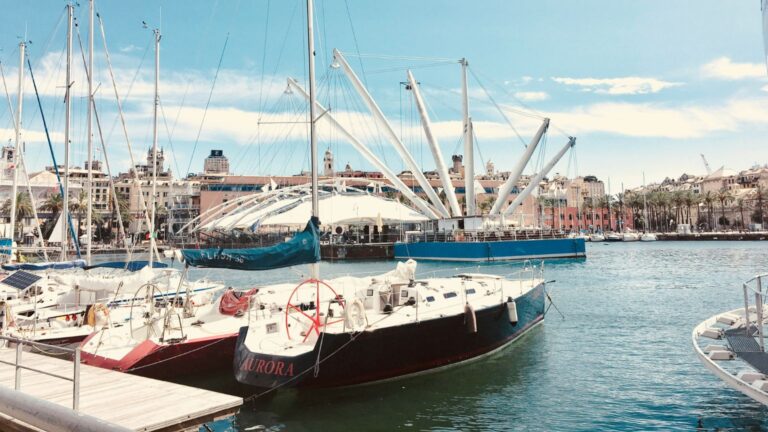Imagine this: the wind howling through the rigging, waves slapping against the hull, your toes frozen into tiny sailor-shaped popsicles — and then, you open the cabin door to a scene straight out of a Scandinavian fairy tale. There’s a little crackling stove in the corner, flames dancing, kettle whistling, and the unmistakable scent of burning wood mingling with salty air. Welcome aboard, friend. You’ve just entered the charmingly ridiculous world of the solid fuel stove on a sailboat.
Yes, it’s as impractical as it sounds. And yes — it’s also completely magical.
Why, In the Name of Poseidon, Would You Do This?
Let’s address the flaming log in the room. Installing a wood-burning stove on a boat sounds like the beginning of a tragic insurance claim. Fire + confined wooden space + fuel tanks = what could possibly go wrong?
But here’s the thing: when it’s cold, damp, and you’ve been living off beans and instant noodles for four weeks, there is nothing — nothing — more life-affirming than the primal, cozy hug of real flame heat. It’s like nature’s apology for everything else she throws at you.
A solid fuel stove gives you:
- Dry, radiant, soul-restoring heat
- The ability to burn driftwood and weird sticks you find ashore
- An excuse to wear cable-knit sweaters unironically
- A suspiciously large sense of self-sufficiency
Plus, it looks great on Instagram.
Installation: Or, How to Turn Your Boat Into a Floating Fireplace Without Dying
Installing a solid fuel stove is a rite of passage. It’s also a logistical nightmare. First, you’ll need to choose a marine-approved stove — think brands like Dickinson or Tiny Tot. Then comes:
- Finding a spot where it won’t set your curtains, dog, or navigation charts on fire
- Installing a heat shield, non-combustible hearth, and proper chimney (flue)
- Ensuring the chimney doesn’t leak in rain or siphon seawater during gales
- Learning a whole new vocabulary of swear words while cutting a hole in your cabin roof
One sailor described the process as “like putting a toaster inside a shoebox and then daring it to kill you.” Accurate.
Fueling the Dream
You’ll quickly learn that not all wood is created equal. Driftwood looks romantic, but it’s often soaked with salt — which burns dirty and corrodes your flue. Hardwoods are ideal, but unless you’re anchored off a hardwood forest (hello, Norway), you might end up burning compressed sawdust bricks, cardboard, or your failed attempt at a DIY spice rack.
A few hot tips:
- Dry fuel is king. Moist logs = sad fire.
- Chop everything small — stoves are tiny and hate commitment.
- Keep a dedicated firewood locker or else your entire cabin will look like a beaver’s Airbnb.
Living the Cozy Life
Once it’s up and running? Bliss. Absolute bliss.
Your stove becomes the heart of the boat. A place to dry socks, warm soup, boil tea, read books, and defrost body parts you didn’t know could go numb. Guests will coo with delight. Strangers will row over to ask about it. Your dog will refuse to leave the hearth.
You’ll develop rituals — lighting the morning fire with reverence, poking it during storms, cursing it when it smokes like a chimney sweep convention.
And yes — you will name it. Probably something like “Bertha,” “Smokey,” or “The Furnace of Truth.”
The Not-So-Cozy Side
Let’s be honest — it’s not all crackling joy.
- Your cabin will sometimes fill with smoke for mysterious reasons.
- Ash gets everywhere. As in, you will find it in your bunk, your coffee, your underpants.
- It’s a pain to keep lit in rough weather — try adjusting a damper in 3-meter seas.
- You’ll become mildly obsessed with chimney creosote, airflow dynamics, and the burn rate of pine.
But these are the sacrifices we make for warmth and glory.
Final Thoughts: Warmth Is a State of Mind (But Fire Helps)
A solid fuel stove on a sailboat is equal parts engineering challenge, romantic fantasy, and survival mechanism. It’s impractical, old-fashioned, and utterly fantastic.
If you’re the kind of sailor who prefers fleece to fans, fairy lights to fluorescent bulbs, and you think “ambience” is a legitimate form of insulation — then friend, get yourself a floating fireplace.
Just maybe keep the fire extinguisher handy.
Fair winds, warm toes, and may your flue always draw.




